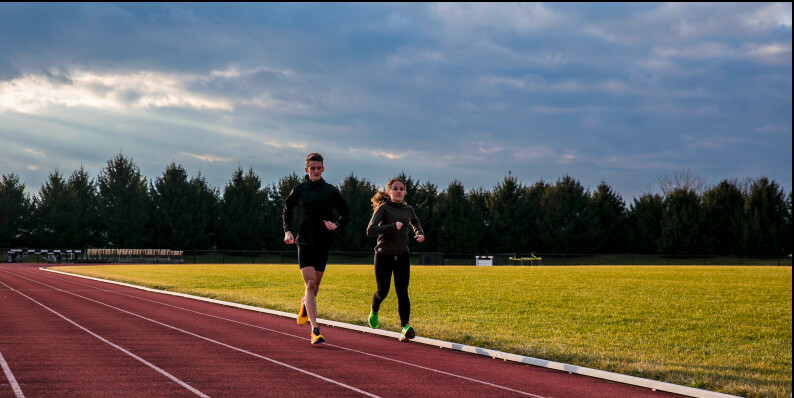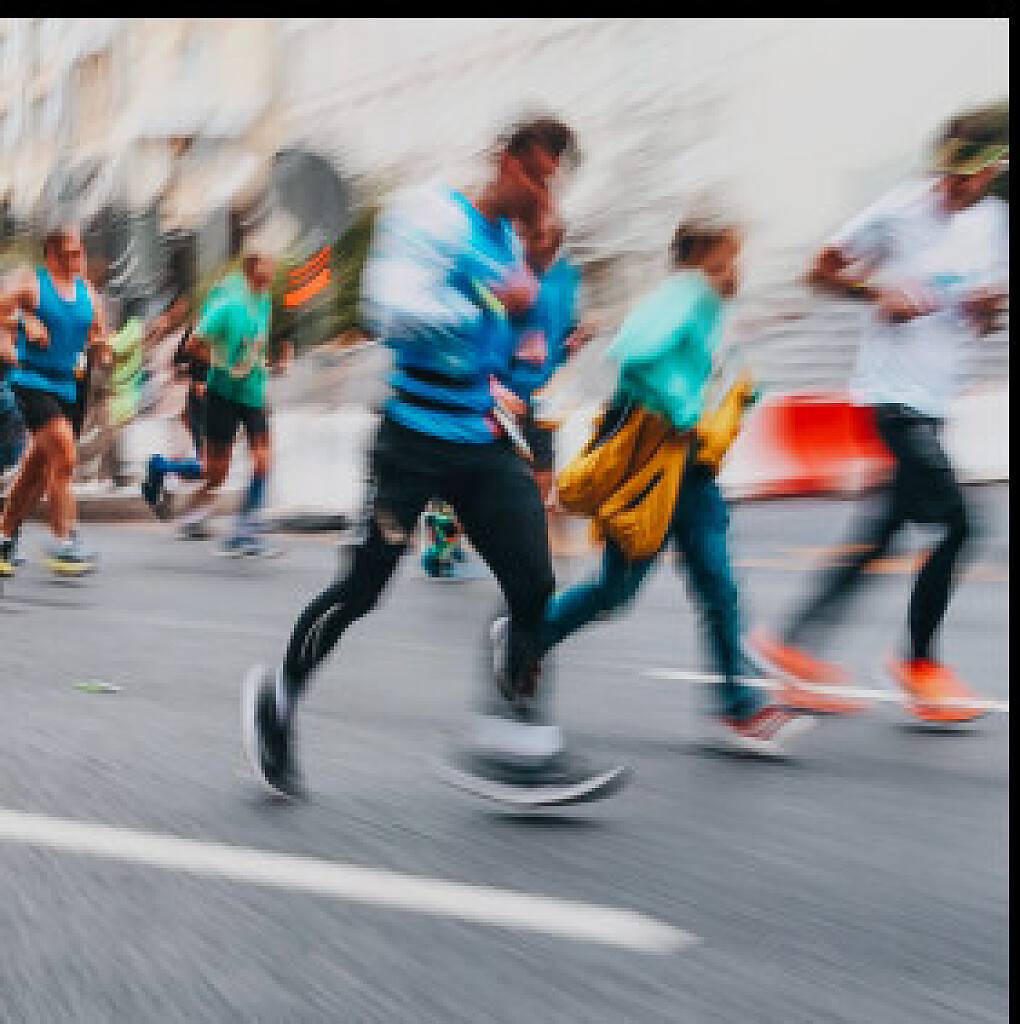Running News Daily
Running News Daily is edited by Bob Anderson in Los Altos California USA and team in Thika Kenya, La Piedad Mexico, Bend Oregon, Chandler Arizona and Monforte da Beira Portugal. Send your news items to bob@mybestruns.com Advertising opportunities available. Train the Kenyan Way at KATA Kenya. (Kenyan Athletics Training Academy) in Thika Kenya. KATA Portugal at Anderson Manor Retreat in central portugal. Learn more about Bob Anderson, MBR publisher and KATA director/owner, take a look at A Long Run the movie covering Bob's 50 race challenge.
Index to Daily Posts · Sign Up For Updates · Run The World Feed
Hey New Runners, Here’s How to Determine Your Goal Pace for Different Workouts
Practicing different paces can provide the key to unlock your best performances.
Most runners think pace is important because of PRs and faster race times, but paces have more significance than just those milestones. In fact even if your goal is to run longer distances or remain a runner for the rest of your life, it’s helpful to get to know your training paces.

That’s why, according to run coaches, you will earn big rewards—both in terms of fitness and mental outlook—if you figure out how to calculate your paces when you run.
“If you can run at the right pace, you’re going to run the right way and feel the right way,” Nike head running coach Chris Bennett tells Runner’s World. “And if you feel the right way, you’re going to want to do it again. That’s the most important thing.”
Whether you include speed workouts in your weekly schedule or only stick to zone 2 runs, you have an ideal pace range for almost every workout and distance you run. Let’s break down the various paces you should know and how to cue those up during various workouts.
The Benefits of Getting to Know Your Running Paces
Pace is measured in units of time per unit of distance, i.e., minutes per mile, and that pace will vary depending on the distance you’re running. For example, your fastest marathon pace will obviously be slower than your fastest 5K pace.
That’s why, when you use a run app or training plan, the program will suggest you do specific runs at a specific pace or even a variety of paces. For example, a speed workout may include short intervals at mile, 5K, or 10K paces.
Whether you train for 5Ks or marathons, or whether you run a few times a week with no particular distance in mind, running at the right pace for any given workout makes it more likely that you will better target physiological changes, such as boosting your VO2 max, Jeff Gaudette, founder of Runners Connect, tells Runner’s World.
“Paying attention to your pace allows runners to properly hit the effort and outcome they’re targeting,” says Gaudette. “Newer runners, for example, will find that if they pay attention to pacing, they can run farther or finish runs not completely exhausted.”
How to Calculate Your Paces
If You’ve Raced...
If your training plan or app suggests you use a specific pace during a run, how will you know what pace to use? Well, if you have some 5Ks or 10Ks under your belt, you can average your paces from those events and go from there.
This also works if you’ve run a marathon and a training plan calls for a long run at below marathon pace.
You can also plug any race distance and your time into an online pacing tool, such as the Runner’s World training pace calculator, to find your ideal pace for various distances.
But what if you haven’t raced or if you’re ready to race a new distance?
If You Haven’t Raced...
A simple way to estimate your 5K and 10K paces is to do a mile time trial on your own, says Gaudette. “Races provide the best data point, but this is the next best thing,” he explains. “And the nice part of doing it this way is you can retest every few weeks. The more you do it, the more you’ll learn to pace yourself.”
To do a time trial, head to a track or an open road with a smartwatch or fitness app tracking your distance. Warm up for at least 10 minutes at an easy pace (you can easily hold a conversation as you run). Then “race” one mile.
Gaudette advises running the first half at a difficult pace (think: you can barely speak a sentence) and then running the second half as fast as you can. This is your mile time.
Now, plug that number into the Runner’s World training pace calculator, or simply add 40 seconds to your mile time to approximate your 5K pace and then about 60 seconds to get your 10K pace, says Gaudette.
Other pace calculators will offer estimates for how long it might take you to complete different race distances. For example, if you plug one hour of run time and a distance of five miles into the Runner’s World pace calculator, you will get estimates like running 10 miles in 2 hours, a half marathon in 2:37, and a marathon in 5:14.
Once you know your mile pace and the relative paces for longer distances, you can also play with the numbers in these online tools to see what your targeted paces need to be during training runs to hit different goals during races.
Finally, you ca use the run/walk pace calculator to find out how to pace your intervals when using the run/walk method so you hit your goals.
How to Connect Your Paces to Your Effort
While paces are important, Bennett says you want to focus more on effort—or feel—during some of your runs, rather than numerical metrics every time you head out. That’s because several factors play a role in what exact pace is best for you on any given day and for any given workout, he explains.
“Depending on where you are in your running journey or training cycle, what the weather is, what elevation you’re at, what you did yesterday, the numbers aren’t always the same,” says Bennett. “There’s some gray area on either side of what your 5K pace or effort should be. It’s dependent on a lot. That might seem overwhelming to a runner, but really, it should be the opposite. It gives you the freedom to step back and ask yourself: How does this feel?”
While it’s helpful to use your 5K and 10K paces as a baseline metric, Bennett believes runners benefit when they pay more attention to their effort level than specific numbers. To do this, represent your effort as a number, 1 through 10 (commonly referred to as your Rate of Perceived Exertion or RPE). For example, your 10K pace will feel like a 6 or 7 RPE, while your 5K pace will feel more like 7.5 or 8.
To help runners dial in that effort even more personally, Bennett suggests using a couple words to describe what a pace feels like. Maybe your 10K effort feels strong and controlled, for example. Then, play on that description to dial into your 5K effort. You are kicking it up just a notch, so your 5K effort may feel fast and controlled.
“If you do this consistently and you keep a running log or keep metrics on your phone, after a couple weeks you can look back and find when I’m feeling good, this is roughly my pace on an easy run,” Bennett says. But then on stressful days, maybe that pace is a little slower and on days you’re well recovered, maybe it’s a little faster.
How to Use Your Paces to Improve Your Runs and Races
“Every run has a purpose,” Bennett often says, and connecting the right pace to your effort level helps you find that purpose. For example, if you are trying to improve your overall half marathon race time, some of your training runs might include speed intervals that, over time, will help you become more efficient at running faster. That is, it won’t feel as hard to run fast.
With that in mind, it helps to understand the variety of runs there are on a training plan, because each of them requires a different effort and, therefore, pace.
For example, easy runs are for going at a relaxed pace and building mileage; you should run them at a conversational effort and end feeling like you could keep going. Ideally, you’ll do these based on effort more than pace, but when you do check out your paces, you’ll likely find a big range, says Gaudette, and that’s okay.
In fact, your easy effort paces may change based on your mood and your energy level, among other variables. But if you notice that your easy pace is creeping up past your typical range, slow down. When you’re running faster than you should for any given outing, says Bennett, you’ll likely wind up stopping early and feeling defeated or even overtraining.
“It doesn’t matter if you’re brand new to running or if you’re heading to the Olympics, the majority of your running is easy runs,” says Bennett. “If you’re not nailing the easy runs, you’re not going to be nailing the harder stuff.”
As for “the harder stuff,” like speed workouts, pace can play a bigger role. Short intervals (think 400 meters) are designed to get you faster and allow you to practice running at paces above your goal race pace. You might clock these at your 5K pace or faster. Longer interval sessions, like mile repeats and tempo runs, help you improve your speed endurance, or holding onto a faster pace for longer. You might run these around 10K pace.
Over time, the combination of all these runs and mix of paces will improve your top speed, as well as your easy pace (while still feeling easy). That’s why it is so helpful to keep track of your paces with notes about your efforts and feelings about those efforts. Plus, it helps you notice and celebrate your progress.
(09/08/2024) Views: 301 ⚡AMPby Runner’s World




